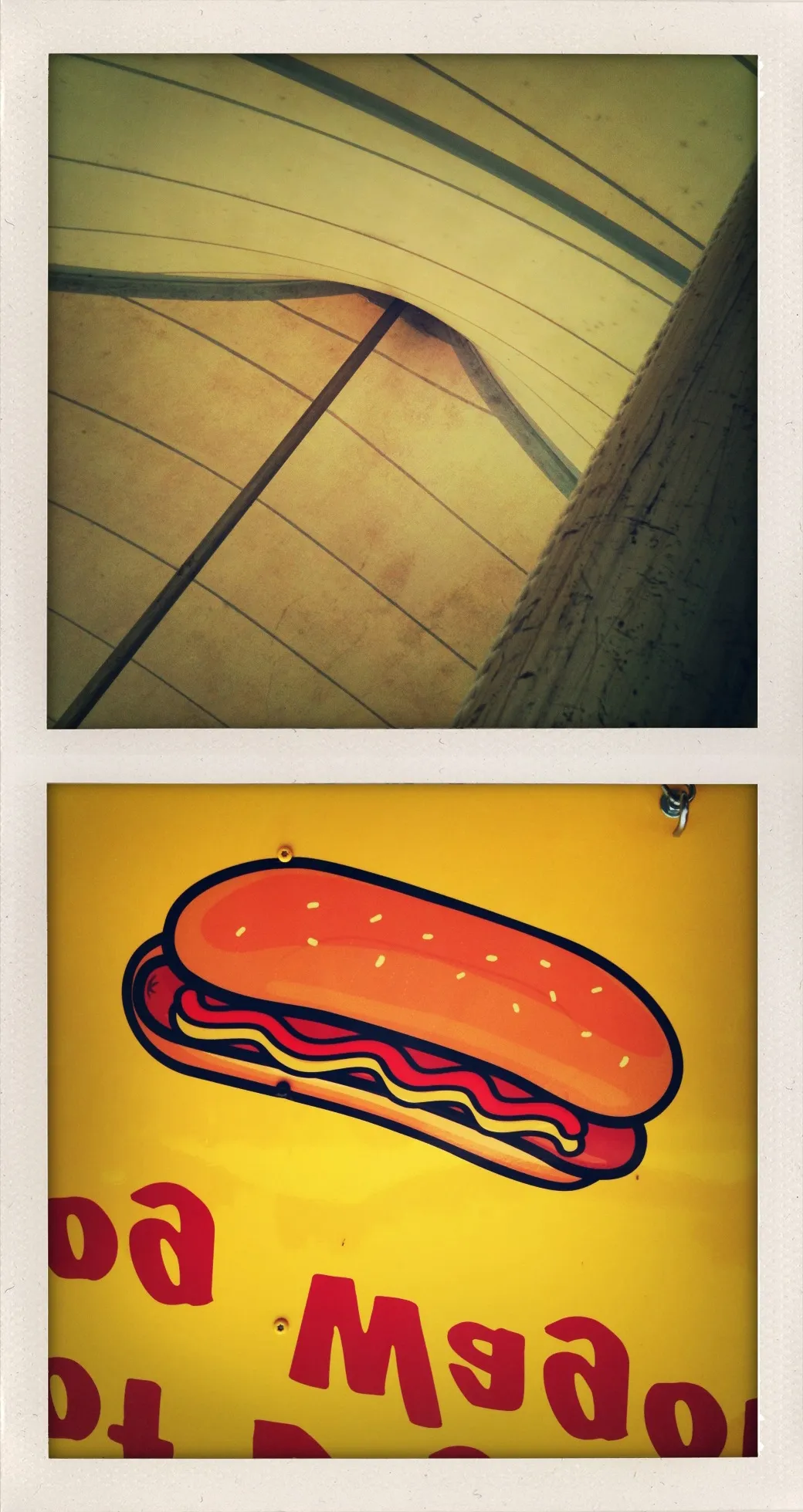Wisconsin

This diptych pairs a circus tent interior with an inverted commercial hot dog sign, both unified by golden yellow tones. The tent references Wisconsin’s circus heritage—Baraboo was home to the Ringling Brothers—while the hot dog nods to the state’s German bratwurst tradition. Both are regional identity markers, one architectural and ephemeral, the other commercial and permanent.
The tent’s weathered canvas and structural ribs suggest backstage reality behind spectacle. Below, the flattened cartoon hot dog and illegible upside-down text transform cultural specificity into corporate branding. The inversion disorients reading, mirroring how place-based culture becomes abstracted through commercial signage. The shared curves between tent structure and bun shape create formal echo between high and low culture, between lived experience and marketed symbol.
Essay written: November 2025